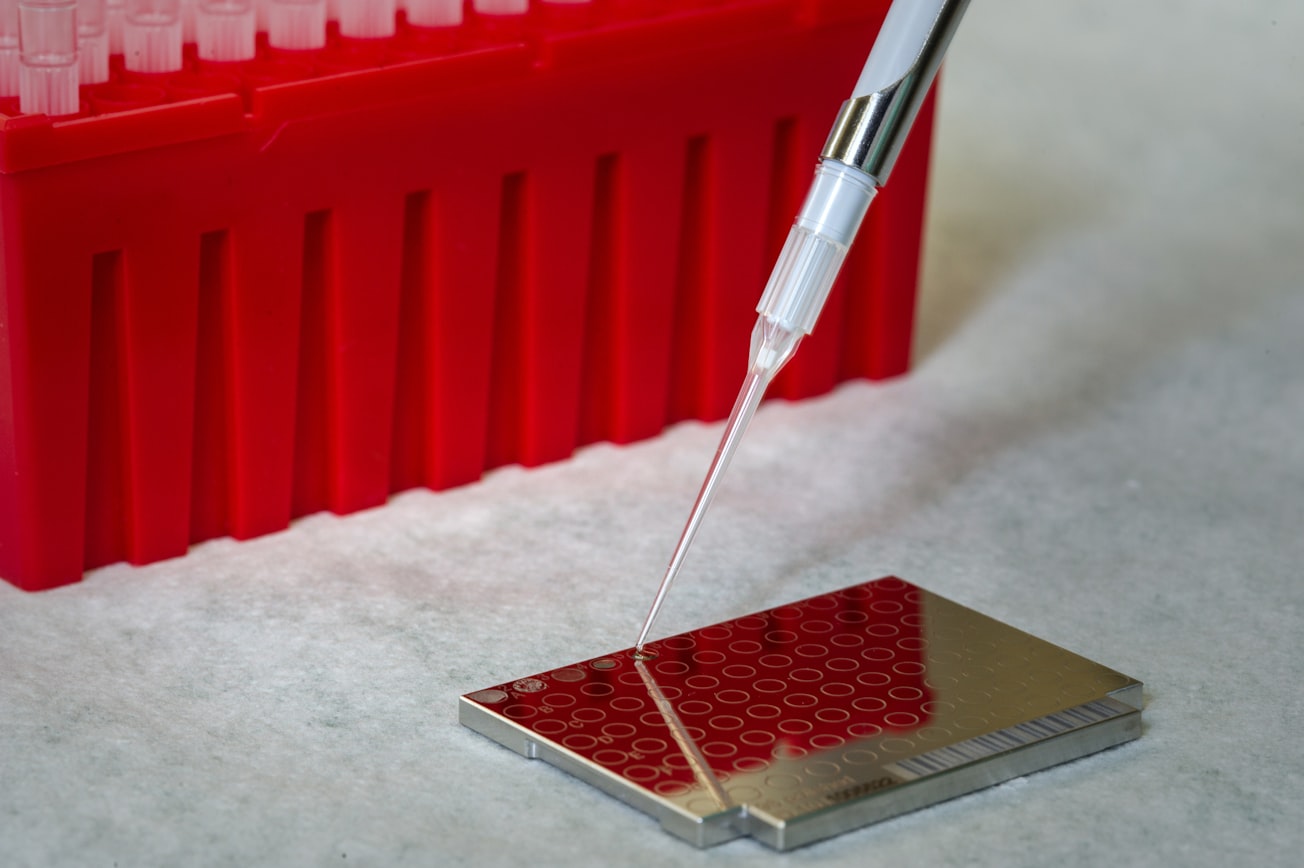What is it about?
PGRMC1 has long been known to exhibit membrane trafficking activity, and its functions can be inhibited by a small molecule called AG-205. Here, we show that PGRMC1 is present in cells in multi-protein complexes that also contain proteins of the actin cytoskeleton. PGRMC1-associated proteins were identified by co-precipitation in PGRMC1-containing complexes, followed by mass spectrometry identification. If we treat the cells with AG-205 the actin-associated proteins are no longer present in the complexes.
Featured Image

Photo by CDC on Unsplash
Why is it important?
Membrane trafficking, such as endocytosis or pinching off vesicles into the cytoplasm, requires a motive force. The actin ctyoskeleton is a major provider of such force. e.g. it is actin and myosin that provide the force of our muscle contractions at a cell and tissue level. The same types of force operate subcellularly at the molecular level during membrane trafficking. Our work suggests that PGRMC1 membrane trafficking may be related to direct interactions with elements of the actin cytoskelton. (However, further work would be necessary to prove that conclusively).
Perspectives
In another recent publication [1] we showed that one of the two main PGRMC1 phosphorylated tyrosines (Y139) is present in a region of the protein on the surface, called the MIHIR. We also found in the same publication that the MIHIR resembled a predicted protein-protein interaction motif found in myosins from many animals. Myosins are actin-interacting proteins. This strongly suggests that the actin cytoskeletal associations of PGRMC1 are mediated by the MIHIR. Now, there are two interesting perspectives here. 1) PGRMC1 is a membrane associated progesterone receptor (MAPR) family member. MAPR proteins have a cytochrome b5 domain fold. However, unlike other cytochrome b5 proteins, PGRMC1 exhibits membrane trafficking. Unlike other cytochrome b5 proteins, MAPR proteins have the MIHIR element (it defines the family). This all looks like the membrane trafficking function of PGRMC1 is through the MIHIR. So far so good. MAPR proteins with MIHIR elements as well as cytoplasmic membrane trafficking are both unique to eukaryotes (the cells like outs and yeast, where genes are compartmentalised into a membrane-bound nucleus). It is possible, but not proven, that MAPR membrane trafficking function was important in the evolution of the very first eukaryote (the so-called last eukaryotic common ancestor, or LECA). 2) The presence of Y139 in the MIHIR is also interesting. If phosphorylated, this would a) disrupt protein interactions with the actin cytoskeleton, and b) enable new interactions with proteins that bind to phosphotyrosines. So far so good again. But in [1] we also showed that PGRMC1 acquired its phosphorylated tyrosines 139 and 180 at the last eumetazoan common ancestor (LEUMCA), the animals that gave rise to jellyfish, hydras, sea anemones, corals, and all bilaterally symmetrical animals such as worms, spiders, molluscs, insects, and chordates (us). The LEUMCA was also the first animal with a gastrulation organiser, which directs the migration of embryonic cells to induce their differentiation into different cell types. The LEUMCA was the first organism with synapsed neurons and differentiated gut epithelial cells. In another paper we show that mutation of Y180 dramatically affects the genomic methylation status of human status [2], very much in line with what we would predict if we messed up the system that directed cell differentiation and maintenance. Now, that migration of the embryonic stem cells upon gastrulation involves the activation of actin cytoskeletal genes, to induce migration. PGRMC1 phosphorylation status induced both actin-cytoskeletal proteins and enhanced migration in cultured cells [3]. Weaving these strands altogether, PGRMC1 tyrosine phosphorylation first acquired by the LEUMCA along with the gastrulation organiser [1] could be instrumental in directing altered actin cytoskeleton properties required for subsequent evolution of the embryogenesis of the animal body plan (which did not exist at the time of the LEUMCA). This has enormous implications for human health and disease, however also contains a healthy measure of speculation that will require future experimental investigation. References 1. Hehenberger E, Eitel M, Fortunato SAV, Miller DJ, Keeling PJ, Cahill MA. 2019. Early eukaryotic origins and metazoan elaboration of MAPR family proteins. Molecular Phylogenetics and Evolution. https://www.ncbi.nlm.nih.gov/pubmed/32278076. 2. Thejer BM, Adhikary PP, Teakel SL, Fang J, Weston PA, Gurusinghe S, Anwer AG, Gosnell M, Jazayeri JA, Ludescher M et al: (Cahill MA). 2020. PGRMC1 effects on metabolism, genomic mutation and CpG methylation imply crucial roles in animal biology and disease. BMC Molecular and Cell Biology. 21:26. https://www.ncbi.nlm.nih.gov/pubmed/32293262. 3. Thejer BM, Adhikary PP, Kaur A, Teakel SL, Van Oosterum A, Seth I, Pajic M, Hannan KM, Pavy M, Poh P et al: (Cahill MA). 2020. PGRMC1 phosphorylation affects cell shape, motility, glycolysis, mitochondrial form and function, and tumor growth. BMC Molecular and Cell Biology. 21:24. https://www.ncbi.nlm.nih.gov/pubmed/32245408.
Dr Michael A Cahill
Charles Sturt University
Read the Original
This page is a summary of: Protein complexes including PGRMC1 and actin-associated proteins are disrupted by AG-205, Biochemical and Biophysical Research Communications, March 2020, Elsevier,
DOI: 10.1016/j.bbrc.2019.12.108.
You can read the full text:
Contributors
The following have contributed to this page







